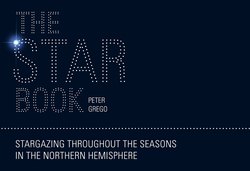Читать книгу The Star Book: Stargazing throughout the seasons in the Northern Hemisphere - Peter Grego - Страница 4
На сайте Литреса книга снята с продажи.
ОглавлениеHow to Use This Book
The star charts in this book show all the naked-eye stars (down to magnitude +5) visible under dark skies from both the northern and southern hemispheres. If a bright star isn’t on the chart, it’s more than likely to be one of the five bright planets – Mercury, Venus, Mars, Jupiter or Saturn, each of which can grow bright enough to be visible from urban locations.
Complete coverage of the Northern celestial sphere is given by the wide-angle star charts featured in this eBook. All of the Northern constellations are depicted, labelled in abbreviated form. Each chart overlaps slightly with its neighbours, enabling them to be referred to more easily. Identification of the constellation patterns is made easier with the inclusion of joining lines. On each chart we highlight several of the more prominent constellations, accompanied by a tour of their bright stars, multiple stars, variable stars and deep-sky objects of interest; some of these are naked eye objects, while others require binoculars or a telescope. Reference is sometimes made to smaller, easily recognized patterns of stars such as the ‘Keystone’ of Hercules and the ‘Plough’ in Ursa Major; known as asterisms, these patterns are a great help in locating individual constellations and objects.
Instead of being an all-encompassing guide to the sky, our selective survey of the heavens serves as an ample taster for what the night skies have to offer the keen observer. If you like what you see, there are many avenues along which you can pursue your interest in astronomy to a greater depth.
For practical purposes, the Northern hemisphere begins with a chart showing the circumpolar constellations, followed by four seasonal views representing the sky above the southern horizon at midnight local time on 1 January (northern winter, southern summer), 1 April (northern spring, southern autumn/fall), 1 July (northern summer, southern spring) and 1 October (northern autumn/fall, southern spring). Representative horizon lines have been selected; for the northern hemisphere these are London (52°N) and New York (39°N). The band of the Milky Way features on the charts, and so too does the line of the ecliptic, near to which the Moon and planets can always be found.
The illustrations alongside each entry come from a variety of sources, but all of them are the work of amateur astronomers keen to capture the beauty of the night skies.
Labelled hypothetical constellations, stars and deep-sky objects with explanatory key.
